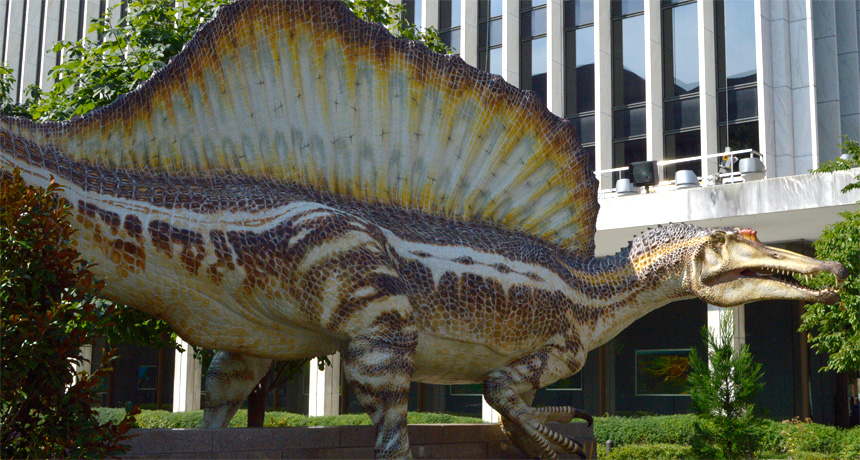Lost-and-found dinosaur thrived in water
Fossils pieced together through ridiculous luck revise view of Spinosaurus

SPLASHIEST DINO Sail-backed Spinosaurus was unique among known dinosaurs for its water-adapted body, and four-legged gait on land, as demonstrated by a sculpture in the National Geographic Society’s courtyard in Washington, D.C.
Bryan Bello/Science News